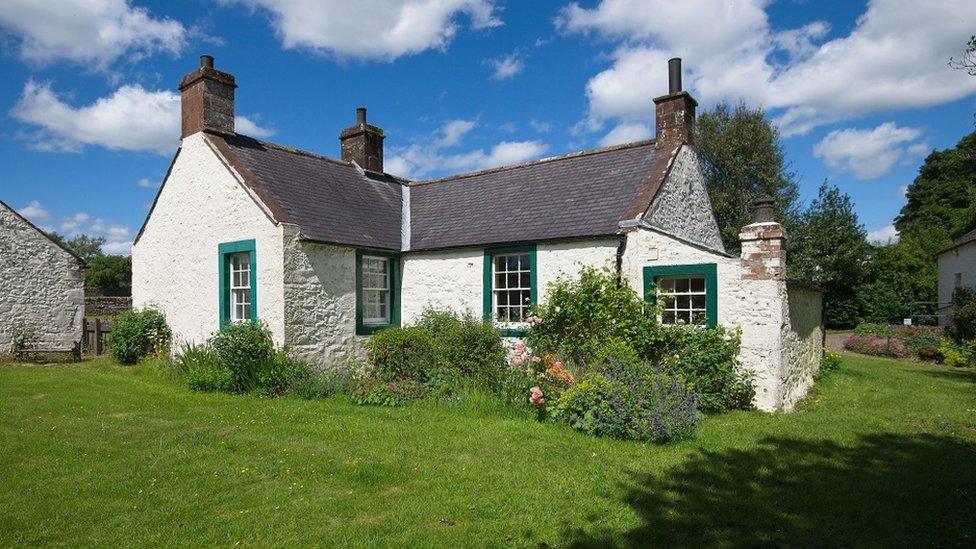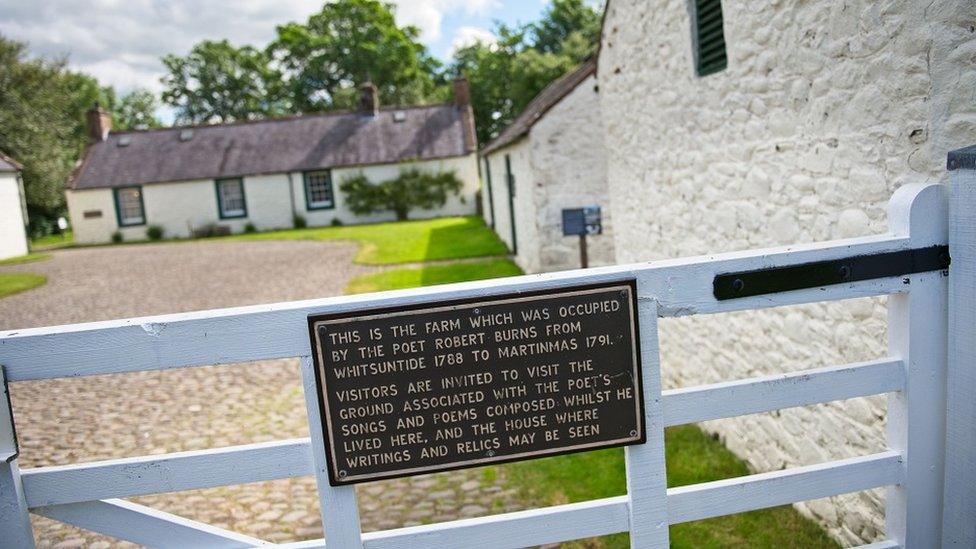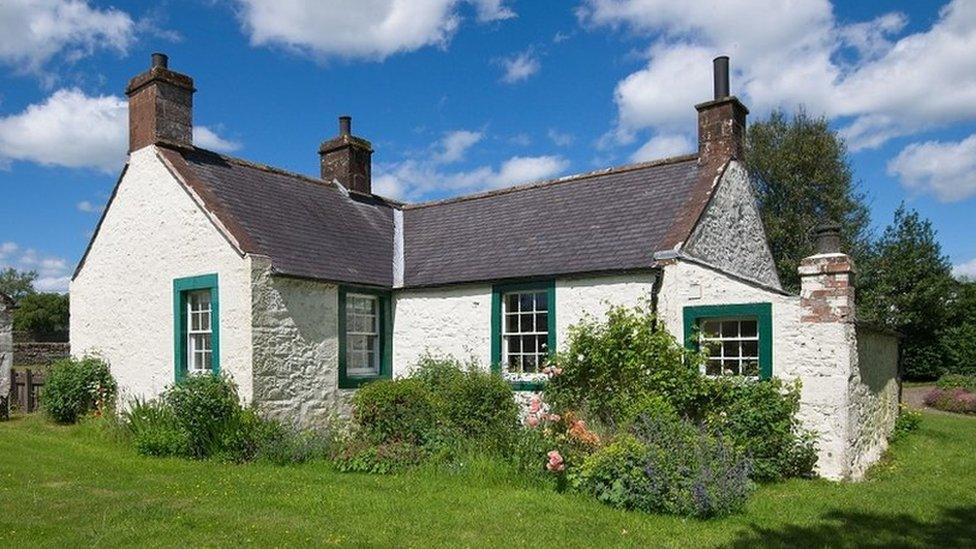Plans to turn farm built by Robert Burns into visitor attraction
- Published

Robert Burns lived at Ellisland near Dumfries for three years
Plans to save a farm where Robert Burns wrote some of his most famous works have been unveiled by a charity.
Ellisland Farm, on the banks of the River Nith in Dumfries and Galloway, was built by the poet in 1788 for his wife Jean Armour and their family.
It was there where he wrote pieces such as Auld Lang Syne and Tam O'Shanter.
Now the Robert Burns Ellisland Trust wants to develop the site as a visitor attraction.
A detailed heritage survey of the site, announced last year, revealed it requires repair work costing about £500,000.
The trust aims to make the farmhouse into an "immersive space" where the public can experience the couple's domestic life.
The proposals also include residencies in the buildings to allow a new generation of artists, musicians and writers to be inspired by the same landscape as Burns.
New accommodation will be modelled on the Hermitage, a tiny bothy on the neighbouring Friars Carse estate, where Burns would escape to write.
The plans are based on the principle of "conservation through use" with money raised from visitors and creative retreats used to subsidise community, heritage and educational events.

An artists' impression of the proposed courtyard as seen from the cafe at the Ellisland Farm
A new visitor centre will be built at the site - which lies outside the village of Auldgirth - with a café and an exhibition space where various items and artefacts from Ellisland's collection will go on show.
They include manuscripts and some of Burns' possessions, such as his books, flute and fishing rod.
The vision for the site has been drawn up by the Trust, together with consultants Delfinity Ltd, OCA Architects, HarrisonStevens landscape architects, Lindsey Clark Heritage Consultants and Jenny Hunter, a specialist in community arts engagement and education.
The plans go on display to the public from Monday and a digital campaign is being funded by Dumfries and Galloway Council's Community-Led Vision Fund.

Dr David Hopes, acting chairman of the trust, said: "Ellisland is the place to fall in love with Burns and see nature through the poet's eyes.
"These plans mean we will preserve and enhance the landscape which inspired Burns by improving bio-diversity and enhancing accessibility."
Dr Hopes highlighted a conservation management plan, published last year, which identified the site as being of "exceptional significance" but warned it was at risk unless extensive repairs were carried out.
'Sweet poetic ground'
He added: "These plans will save the buildings by conserving them through use, safeguard the important collection and allow many more people to enjoy the site and benefit from it."
Joan McAlpine, the trust's business development manager, said: "These proposals will bring Ellisland alive by enabling new generations to be inspired as Burns was inspired by what he called the 'sweet poetic ground' on the Banks of the Nith.
"We believe people will want to come from all over the world to immerse themselves in the landscape which inspired Auld Lang Syne, Ye Banks And Braes, John Anderson and many more songs."
Related topics
- Published24 January 2022

- Published16 June 2021

- Published31 March 2021

- Published5 June 2020
